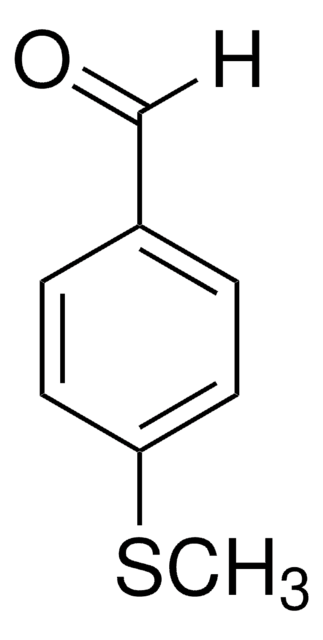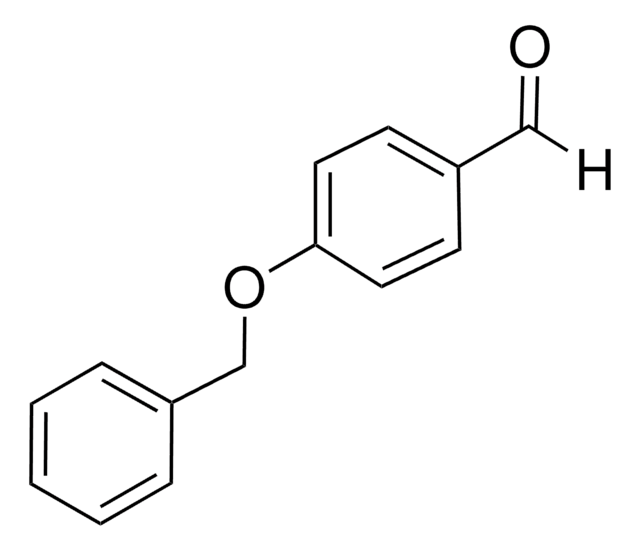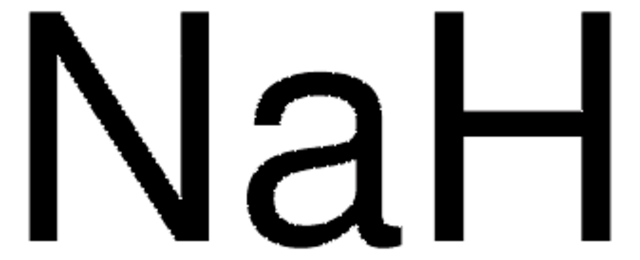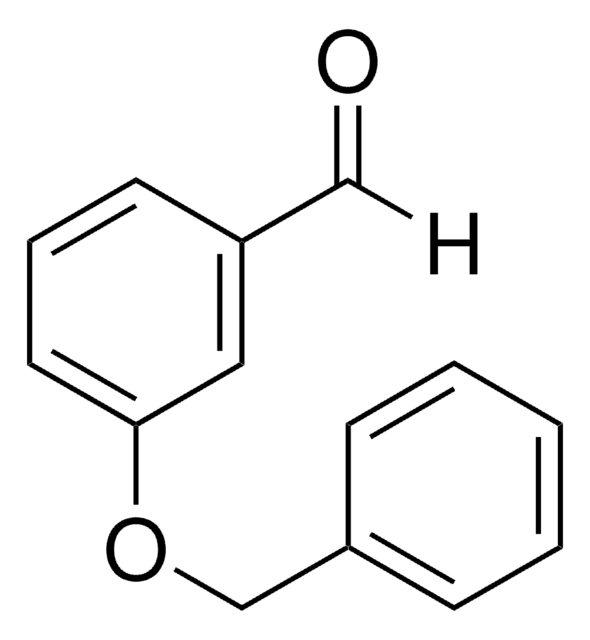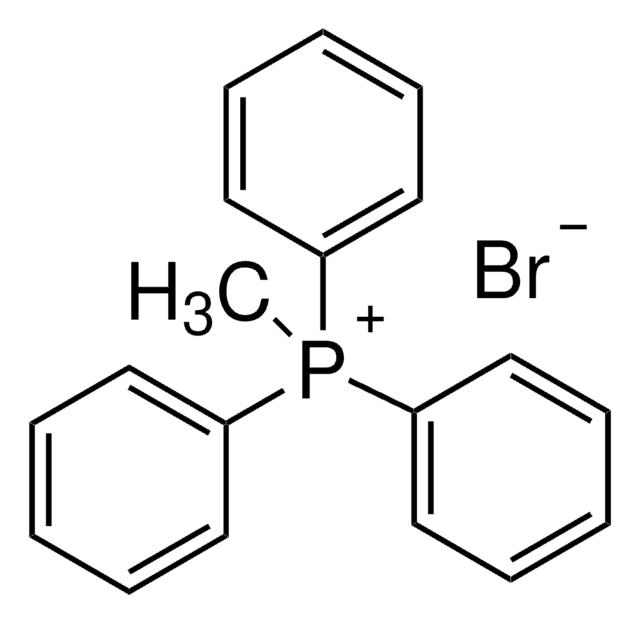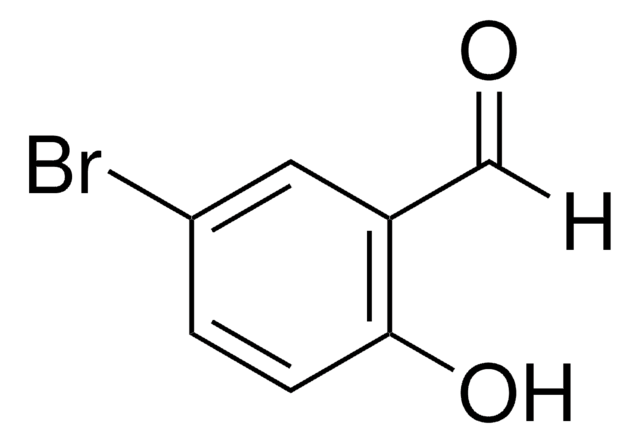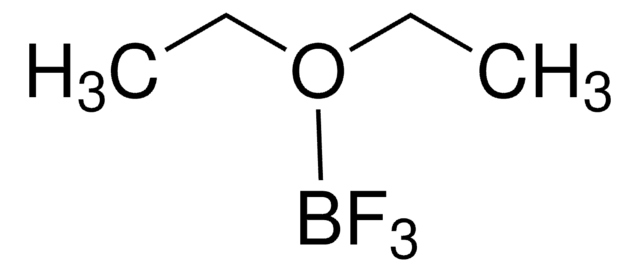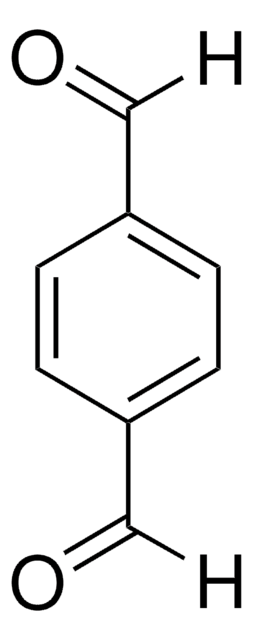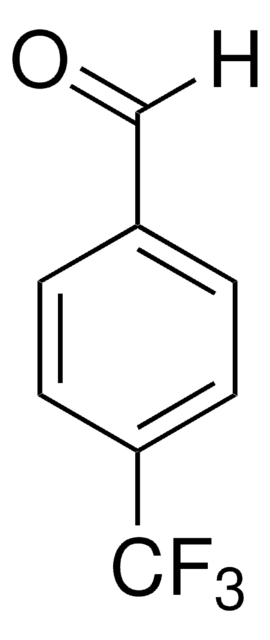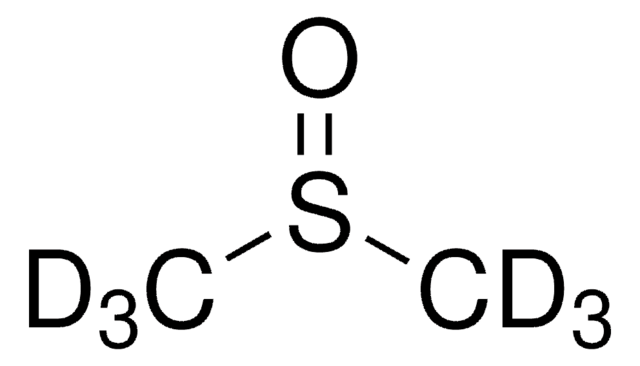All Photos(1)
About This Item
Linear Formula:
C6H5CH2OC6H4CHO
CAS Number:
Molecular Weight:
212.24
MDL number:
UNSPSC Code:
12352100
PubChem Substance ID:
NACRES:
NA.22
Recommended Products
Assay
98%
refractive index
n20/D 1.6 (lit.)
bp
326 °C (lit.)
density
1.339 g/mL at 25 °C (lit.)
SMILES string
O=Cc1ccccc1OCc2ccccc2
InChI
1S/C14H12O2/c15-10-13-8-4-5-9-14(13)16-11-12-6-2-1-3-7-12/h1-10H,11H2
InChI key
PBEJTRAJWCNHRS-UHFFFAOYSA-N
General description
2-Benzyloxybenzaldehyde is a benzaldehyde derivative. It undergoes enantioselective cyanoformylation with ethyl cyanoformate in the presence of a vanadium(V) chiral salen complex and imidazole to form the corresponding cyanohydrin carbonate.
Application
2-Benzyloxybenzaldehyde may be used in the synthesis of:
- 2-benzyloxy-2′-hydroxy-3′,4′,6′-trimethoxychalcone
- N2-(2-benzyloxy)benzylidenyl isonicotinic acid hydrazide
- 2-hydroxy-2′-methoxybenzophenone
- 2′-hydroxy-5,6,7-trimethoxyflavone
Storage Class Code
10 - Combustible liquids
WGK
WGK 3
Flash Point(F)
Not applicable
Flash Point(C)
Not applicable
Personal Protective Equipment
dust mask type N95 (US), Eyeshields, Gloves
Regulatory Information
新产品
Choose from one of the most recent versions:
Already Own This Product?
Find documentation for the products that you have recently purchased in the Document Library.
Vanadium(V) salen complex catalyzed highly enantioselective cyanoformylation of aldehydes in the presence of imidazole as a cocatalyst.
Khan NH, et al.
European Journal of Organic Chemistry, 2008(26), 4511-4515 (2008)
Synthesis of 3-ureido derivatives of coumarin and 2-quinolone as potent acyl-CoA: cholesterol acyltransferase inhibitors.
Tawada H, et al.
Chemical & Pharmaceutical Bulletin, 43(4), 616-625 (1995)
The synthesis of 5, 2'-dihydroxy-6, 8-dimethoxyflavone and its isomers: A revised structure of skullcapflavone I.
Horie T, et al.
Bulletin of the Chemical Society of Japan, 52(10), 2950-2952 (1979)
Synthesis and structure-activity relationship of cytotoxic 5,2',5'-trihydroxy-7,8-dimethoxyflavanone analogues.
Min BS, et al.
Archives of Pharmacal Research, 19(6), 543-550 (1996)
Michael J Hearn et al.
European journal of medicinal chemistry, 44(10), 4169-4178 (2009-06-16)
Structural modification of the frontline antitubercular isonicotinic acid hydrazide (INH) provides lipophilic adaptations (3-46) of the drug in which the hydrazine moiety of the parent compound has been chemically blocked from the deactivating process of N(2)-acetylation by N-arylaminoacetyl transferases. As
Our team of scientists has experience in all areas of research including Life Science, Material Science, Chemical Synthesis, Chromatography, Analytical and many others.
Contact Technical Service